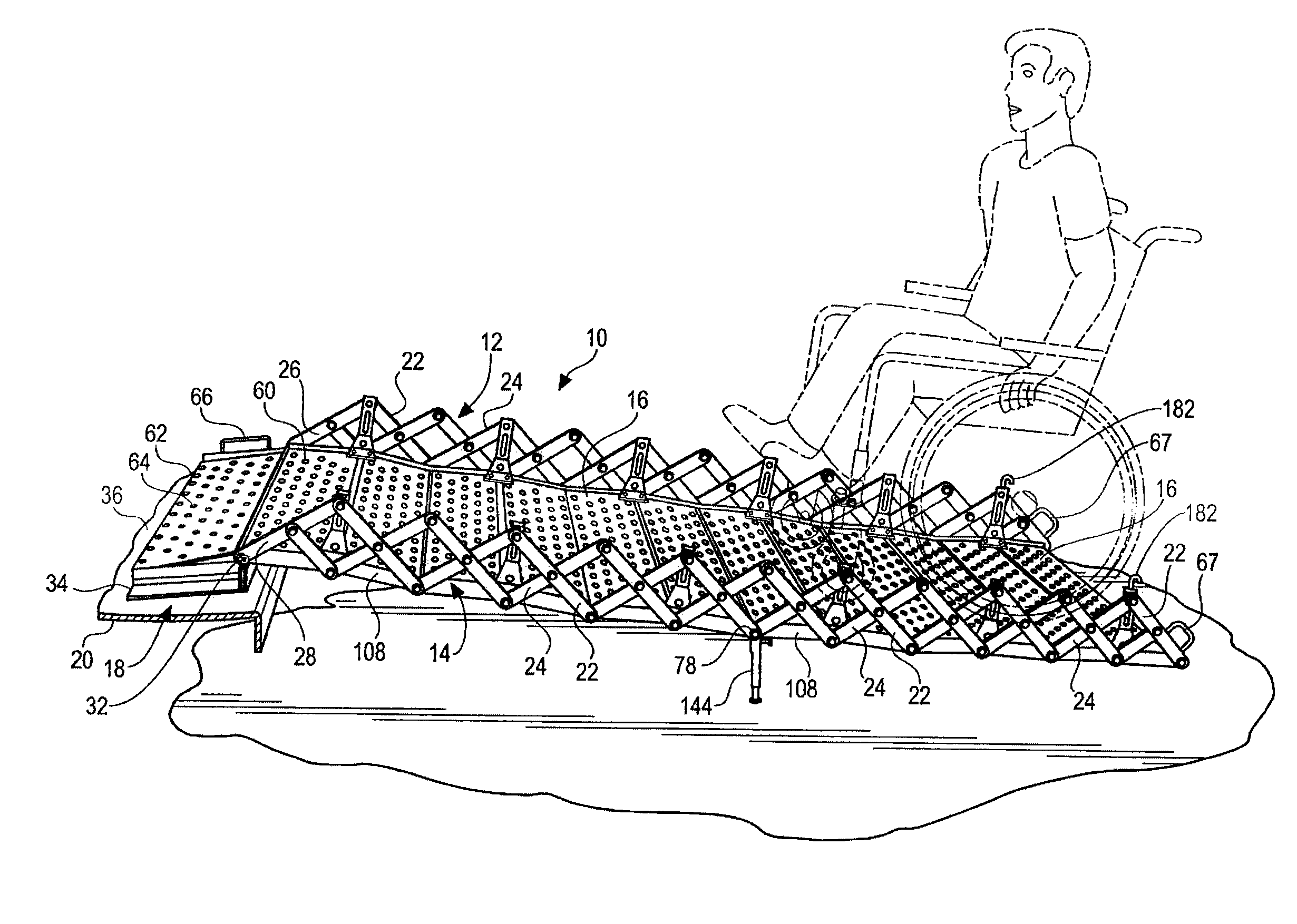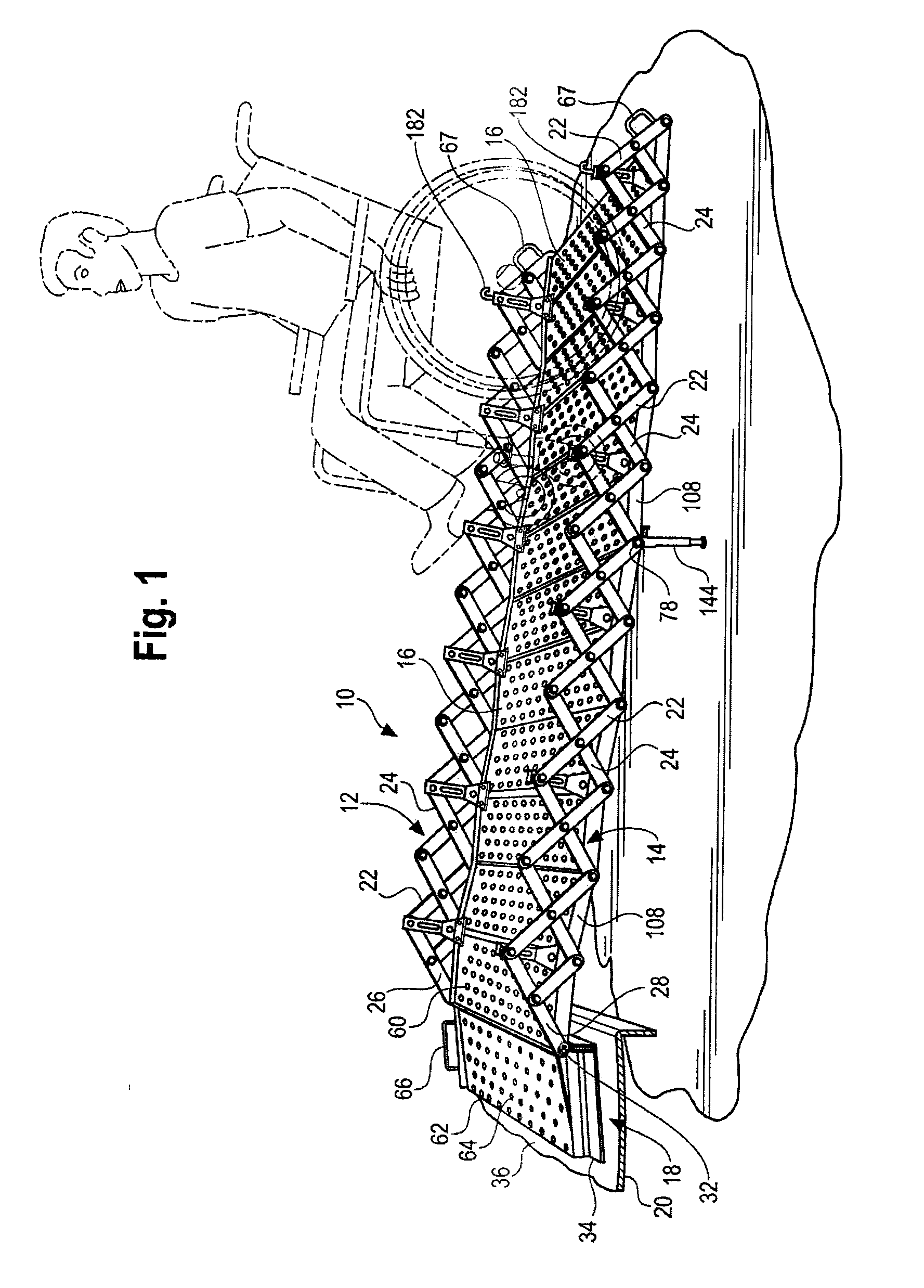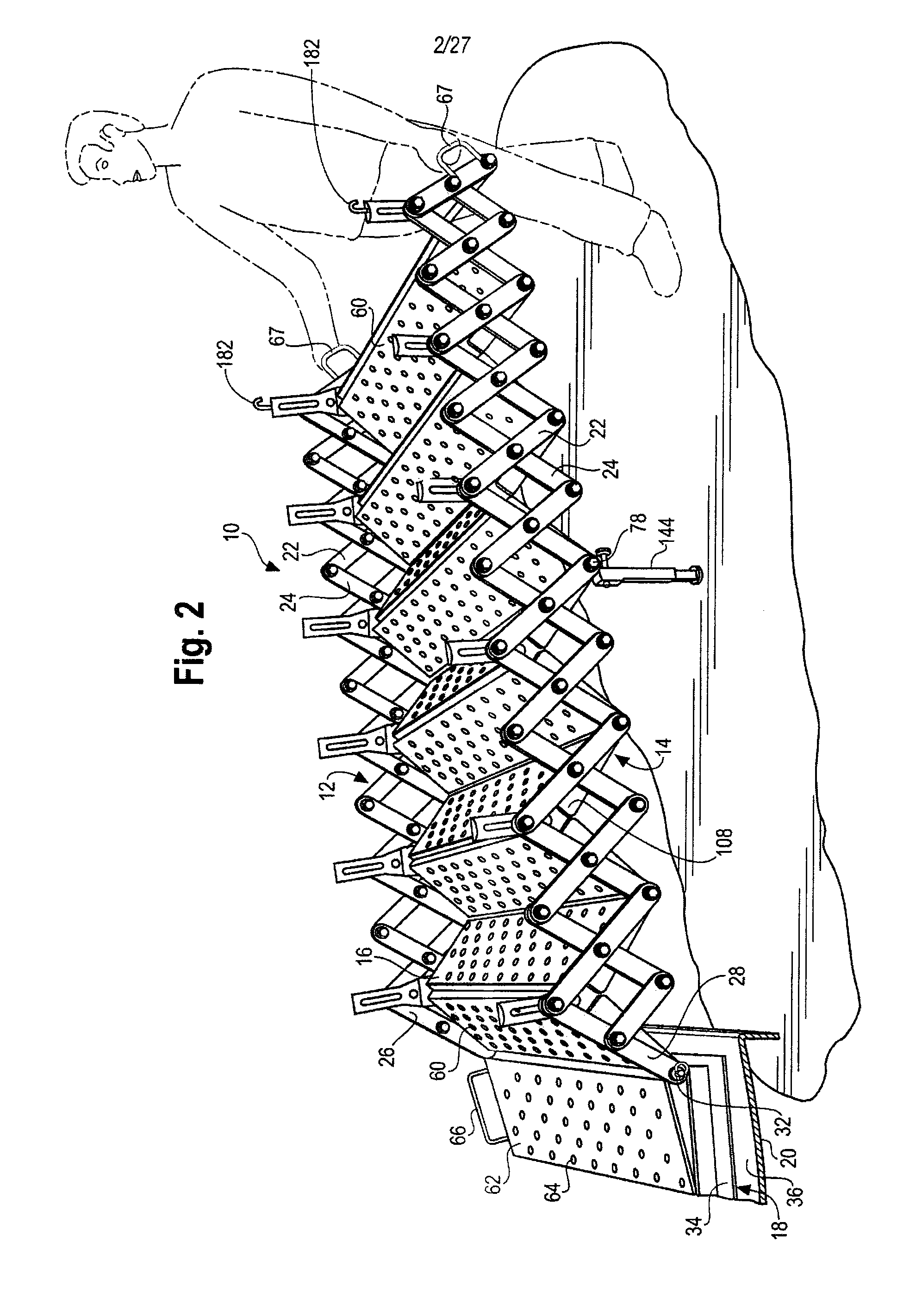Handicap ramp for accessing and egressing transport vehicles
a technology for transport vehicles and ramps, which is applied in the direction of bridges, ambulance services, construction, etc., can solve the problems of not being able to take the transport vehicle to be used, occupying valuable storage space, and not being able to disclose the ramps, so as to achieve the effect of reducing the weight and ensuring the strength
- Summary
- Abstract
- Description
- Claims
- Application Information
AI Technical Summary
Benefits of technology
Problems solved by technology
Method used
Image
Examples
Embodiment Construction
[0053]The present invention provides an expandable and contractable ramp assembly for moving heavy objects, for example, handicapped persons in movable chairs, such as wheelchairs, along with their aides, into and out of vehicles and transport devices, such as automotive vans, mini-vans, railroad cars, boats, and the like. The present invention is designed to support loads in the range of 800 to 900 pounds, and to be manually contractable. In an embodiment, the ramp assembly of the present invention is angularly movable for storage in the vehicle or other transport device when not in use, out of the path of others entering and leaving the vehicle. In addition, the contracted ramp can be readily detached altogether from the vehicle or device in which it is used, to allow the ramp to be moved into storage when not being used, enabling the vehicle or device to engage in its normal use.
[0054]The ramp assembly of the present invention is also used in conjunction with a unique hand movabl...
PUM
 Login to View More
Login to View More Abstract
Description
Claims
Application Information
 Login to View More
Login to View More - R&D
- Intellectual Property
- Life Sciences
- Materials
- Tech Scout
- Unparalleled Data Quality
- Higher Quality Content
- 60% Fewer Hallucinations
Browse by: Latest US Patents, China's latest patents, Technical Efficacy Thesaurus, Application Domain, Technology Topic, Popular Technical Reports.
© 2025 PatSnap. All rights reserved.Legal|Privacy policy|Modern Slavery Act Transparency Statement|Sitemap|About US| Contact US: help@patsnap.com



